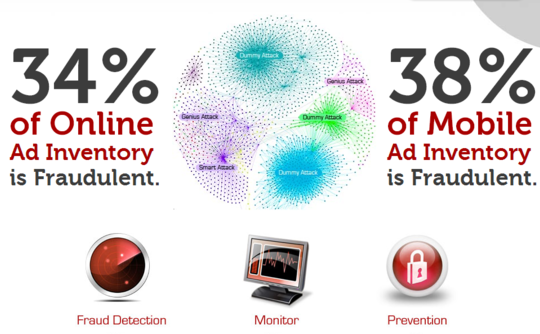I recently spoke with Jalal Nasir, CEO of Pixalate, a leading real-time ad analytics platform that helps advertisers and ad networks detect fraud and get performance data to improve their digital marketing campaigns and optimize media spend.
With Pixalate, brands can compare competing media buying channels, DSPs, ad exchanges and websites. RTB and programmatic buying become transparent with Pixalate's ad verification and fraud detection technology, which identifies bots and advertising fraud across devices.
Major brands such as Orange Telecom, Amazon, TripAdvisor, LendingTree are using Pixalate to maximize their digital media spending. The company is a little over two years old and has just announced $4.6M in funding, led by Javelin Venture Partners. Pixalate is currently the only ad analytics platform to offer viewability and fraud detection services free of charge.
Tim Nichols: You've been involved in ad tech for a long time; what inspired you to start Pixalate?
Jalal Nasir: Like many entrepreneurs, I wanted to solve my own problem. In my case, it was aggregating ad campaign performance data across disparate ad platforms. There was no way to do that, so we built Pixalate. The early version of the product collected, aggregated and analyzed campaign data, regardless of the source.
As we were building out the platform, RTB continued to grow as a share of overall media buying. New requirements emerged, like viewability and new problems surfaced, like fraud. Very quickly, we expanded our offering to include attribution analysis, verification and viewability, and fraud detection.
TN: Fraud is becoming a huge problem in RTB media buying. How is Pixalate solving that problem?
JN: As a former member of Amazon's fraud team, I was able to see, first hand, how fraud was creating big problems in the ecommerce world. We did some great work there to deal with it, as did other players in the ecommerce category. As a consequence, we've seen a migration of fraud to the RTB ad ecosystem. According to our data and other reports I've seen, it's estimated that average RTB fraud could be as high as 30 percent. In some categories, as high as 60 percent.
In addition, fraud is happening at all levels of the user conversion funnel including, impression, click and conversion. It's being perpetrated by both bots and humans. This creates a very complex problem and while advertisers want to invest more with their RTB media buys, it becomes difficult to justify when thirty cents out of every dollar is wasted on fraud.
We've developed technology that analyzes mass amounts of data in real time. We do this across both desktop and mobile platforms and we aggregate key statistics in an easy to use dashboard. Advertisers can see exactly how much of their spend is wasted, where the fraud is coming from, and take immediate action to kill the fraud and optimize their spend. We operate at all levels of the conversion funnel and detect both bots and human based fraud.
TN: You're making some of your services free. Can you tell me a bit more about that?
JN: We recently announced that we'll be providing our basic viewability and fraud detection analytics free of charge for brands and agencies. We're the only ad analytics platform that is doing this. With Pixalate's basic service, advertisers will be able to easily identify the best ad network and publisher partners and increase their spend with them.
Additionally, we believe that basic viewability and fraud detection will fast become commoditized. Companies that have point solutions are on a race to the bottom. Pixalate's free offering will include ad analytics, viewability and fraud detection. We also have advanced analytics that include fraud prevention, attribution analysis, and funnel measurement. We do charge for these advanced services and they are available on a subscription basis.
TN: Can you tell me a bit more about how you collect and process data?
JN: We've built our proprietary pixel and storage layer technology in a way that enables us to process and analyze mass amounts of data, in real-time, at a very low cost. The technology we've developed analyzes over 50 different dimensions at every event. These dimensions include things like location on page, ad size, domain, traffic source and many others. This provides a ton of transparency and insight.
In one case, we worked with a large vertical ad network who needed to deal with fraud and viewability, among other things. We implemented Pixalate with them and the outcome was impressive. In fact, as a direct result of our technology, they were able to expel multiple suspicious publishers and reduce their fraud rate to below 5 percent.
TN: What's next for Pixalate?
JN: We're working on new products that will enable RTB media buyers to better plan and optimize their spends. While I'm not ready to talk specifically about our product roadmap. I can say this: imagine a world where you can eliminate fraud from media buys before you start to run your campaigns.
TN: That would be awesome. Thanks Jalal.
JN: You're welcome.
The below article was originally written on December 9, 2013 by Tim Nichols, published by ClickZ.



